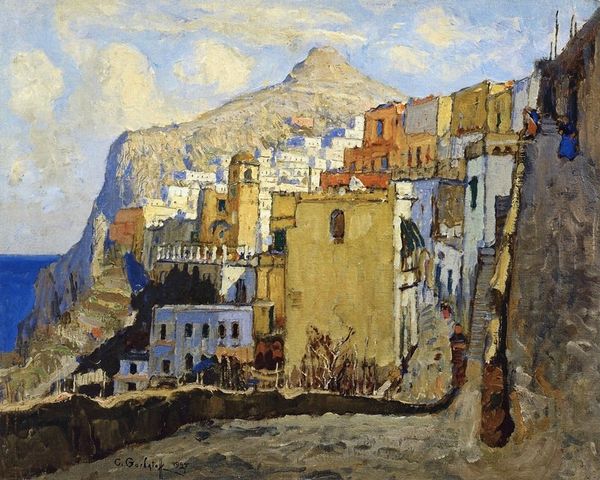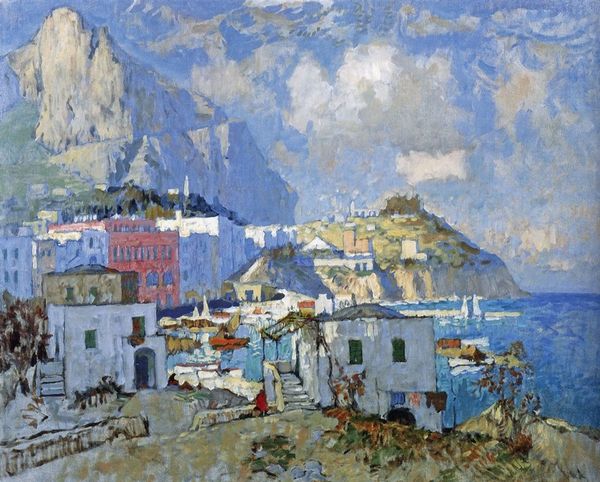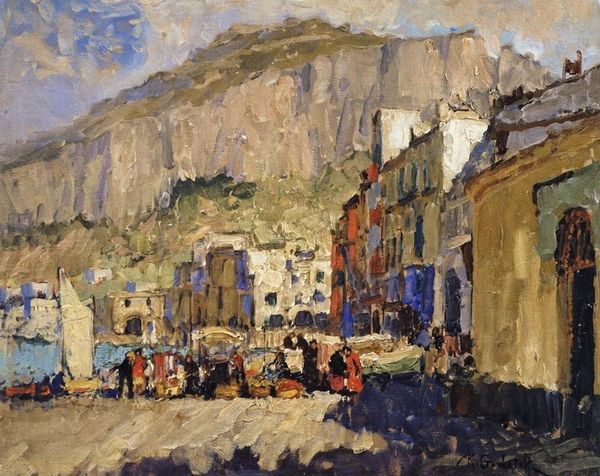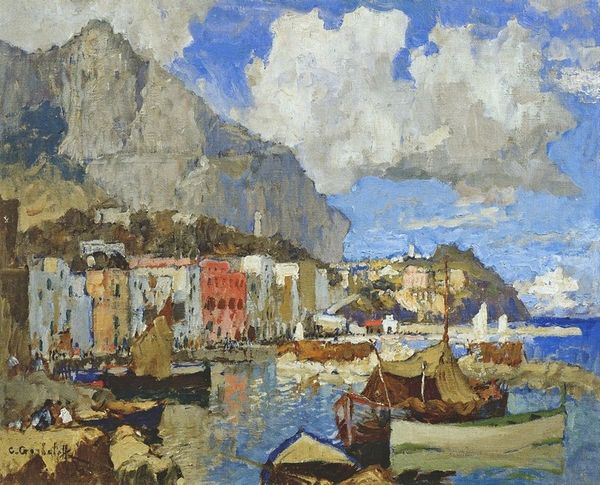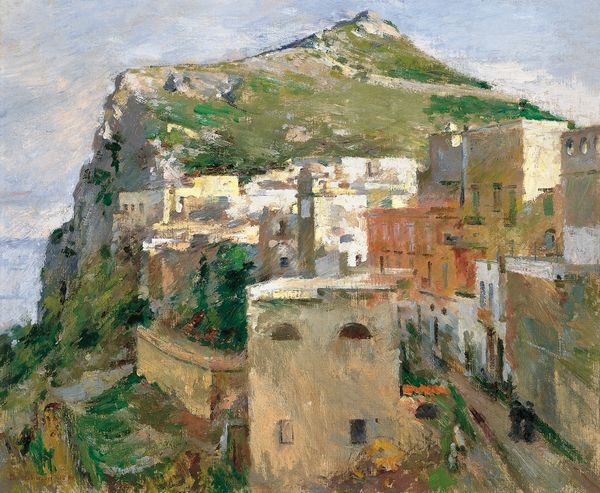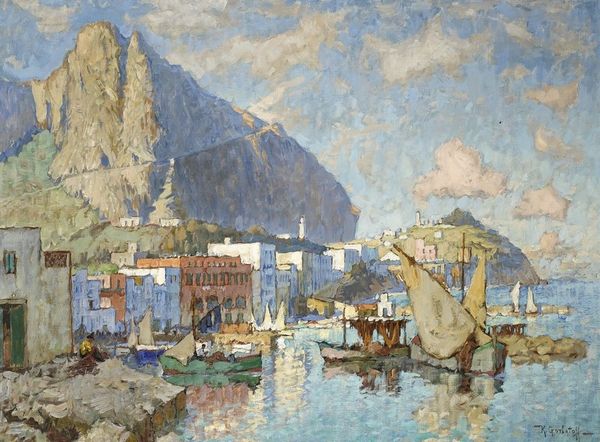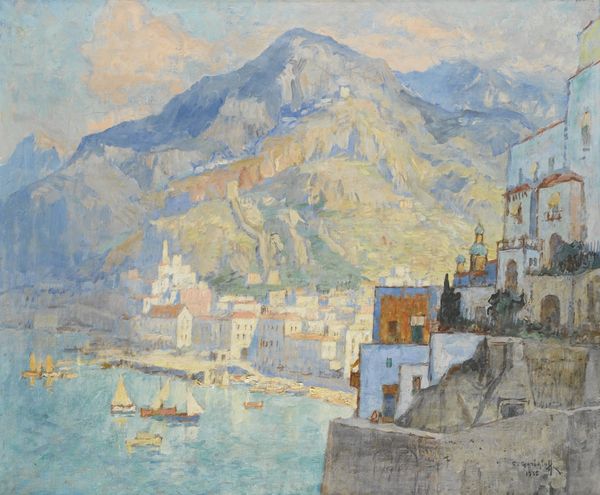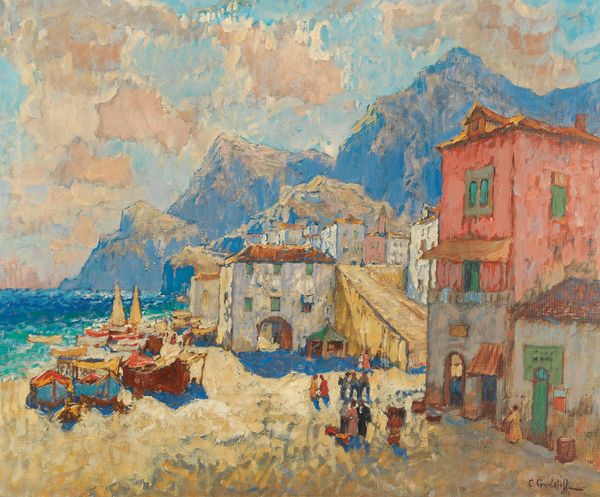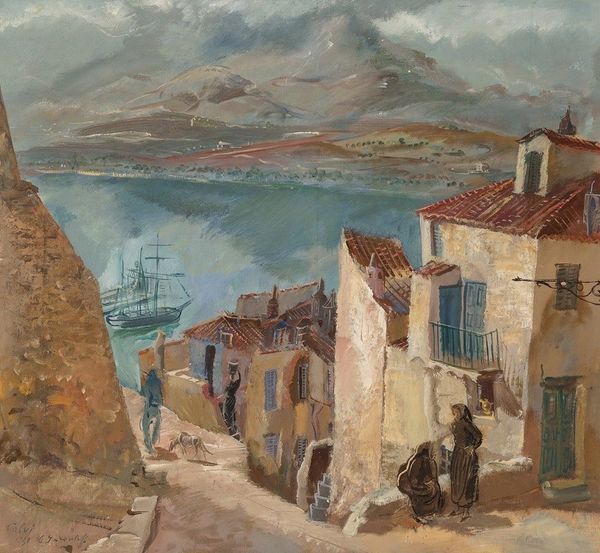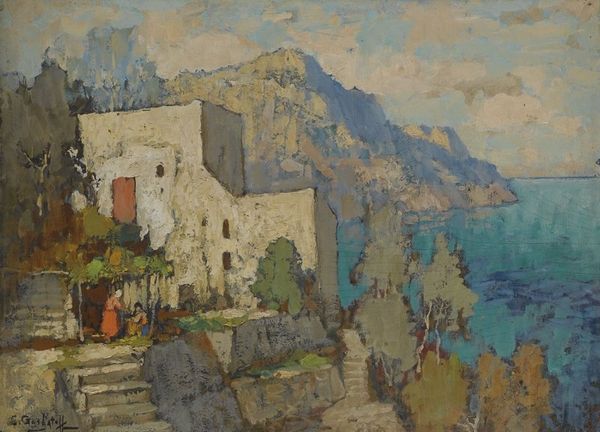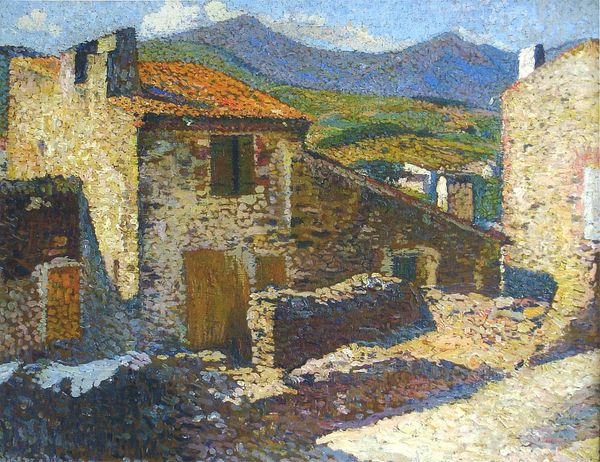
Copyright: Public domain
Curator: Here we have Konstantin Gorbatov's "Capri in Winter," painted in 1927. The scene showcases the iconic Italian island, rendered in a somewhat subdued palette, dominated by blues, grays and sun-drenched whites. Editor: It's striking how the weight of the mountain seems to press down on the small city. There is a kind of vulnerable beauty. And that cool palette gives a sense of both warmth and detachment. It really does feel like a winter light. Curator: Gorbatov, deeply rooted in the Russian artistic tradition, spent much of his career outside of Russia, and often depicted foreign landscapes. Consider how the socio-political turmoil in his homeland, especially post-revolution, might have affected his choice of subjects. "Capri in Winter," might represent more than just a change of scenery; it could represent freedom and escape. Editor: I see a tension between the idyllic landscape and this historical reading. We know the "exotic" appeal of such locations were rarely equally accessible. Who exactly is allowed to freely move through such landscapes and claim its beauty for themselves? Curator: An interesting point. And think of how the impressionistic style flattens and generalizes the island into a type. This technique further reinforces our ideas and expectations. There's less concern with the specific lived experiences and more with an idea of place, something many impressionists wrestled with. Editor: Exactly! Gorbatov, through this technique and subject choice, positions himself within certain discourses of privilege. However, to appreciate its beauty shouldn't negate critically engaging with that position, especially because the painterly style is seductive! The almost tangible texture he creates using oil paint adds a sensual layer that invites touch and intimate contemplation. Curator: A very useful thing to consider. Gorbatov gives us a visually engaging experience while inviting these dialogues about the world we encounter, and, often, take for granted. Editor: Indeed. This painting invites us to linger, questioning not just what we see, but the conditions under which such a vision is even possible. It compels us to really see.
Comments
No comments
Be the first to comment and join the conversation on the ultimate creative platform.
